 Loading... Please wait...
Loading... Please wait...Our Newsletter
what is Steampunk
Posted on 11th Dec 2018 @ 6:53 AM
what is Steampunk?
Steampunk is a subgenre of science fiction or science fantasy that incorporates technology and aesthetic designs inspired by 19th-century industrial steam-powered machinery. Although its literary origins are sometimes associated with the cyberpunk genre,[3] steampunk works are often set in an alternative history of the 19th century's British Victorian era or American "Wild West", in a future during which steam power has maintained mainstream usage, or in a fantasy world that similarly employs steam power. However, steampunk and Neo-Victorian are different in that the Neo-Victorian movement does not extrapolate on technology and embraces the positive aspects of the Victorian era's culture and philosophy.[citation needed]
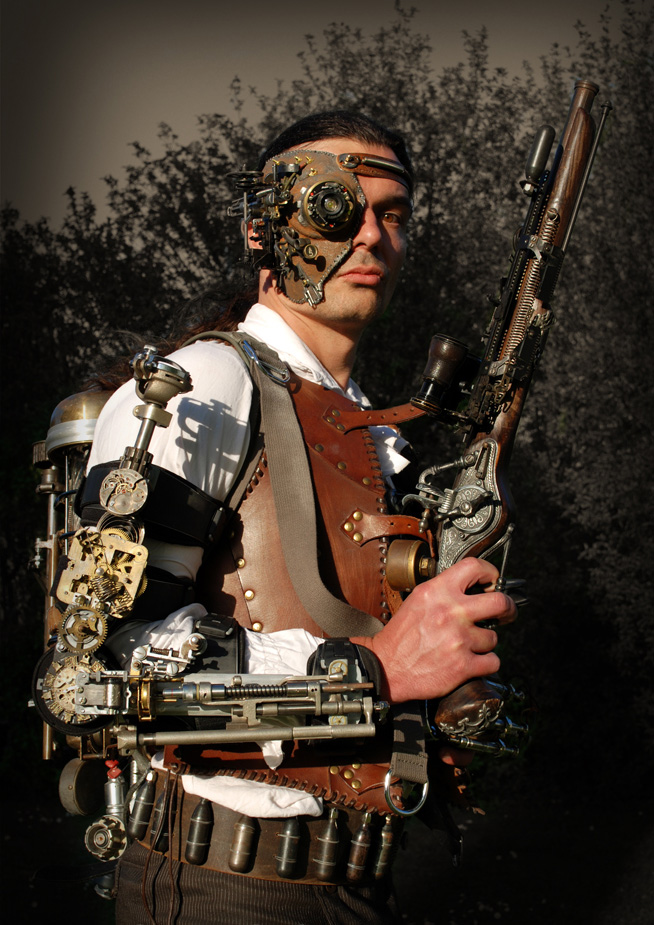
Steampunk most recognizably features anachronistic technologies or retrofuturistic inventions as people in the 19th century might have envisioned them, and is likewise rooted in the era's perspective on fashion, culture, architectural style, and art.[citation needed] Such technology may include fictional machines like those found in the works of H. G. Wells and Jules Verne, or of the modern authors Philip Pullman, Scott Westerfeld, Stephen Hunt, and China Miéville.[original research?] Other examples of steampunk contain alternative-history-style presentations of such technology as steam cannons, lighter-than-air airships, analogue computers, or such digital mechanical computers as Charles Babbage's Analytical Engine.[citation needed]
Steampunk may also incorporate additional elements from the genres of fantasy, horror, historical fiction, alternate history, or other branches of speculative fiction, making it often a hybrid genre.[citation needed] The first known appearance of the term steampunk was in 1987, though it now retroactively refers to many works of fiction created as far back as the 1950s or 1960s.[citation needed]
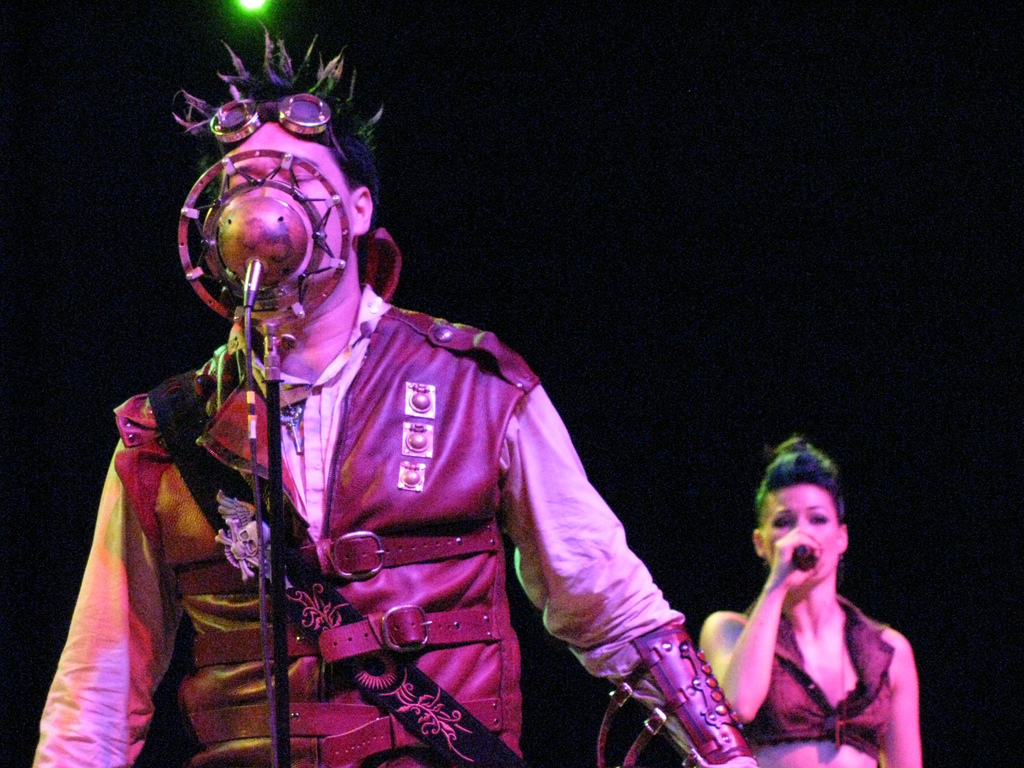
Steampunk also refers to any of the artistic styles, clothing fashions, or subcultures that have developed from the aesthetics of steampunk fiction, Victorian-era fiction, art nouveau design, and films from the mid-20th century.[4] Various modern utilitarian objects have been modded by individual artisans into a pseudo-Victorian mechanical "steampunk" style, and a number of visual and musical artists have been described as steampunk.
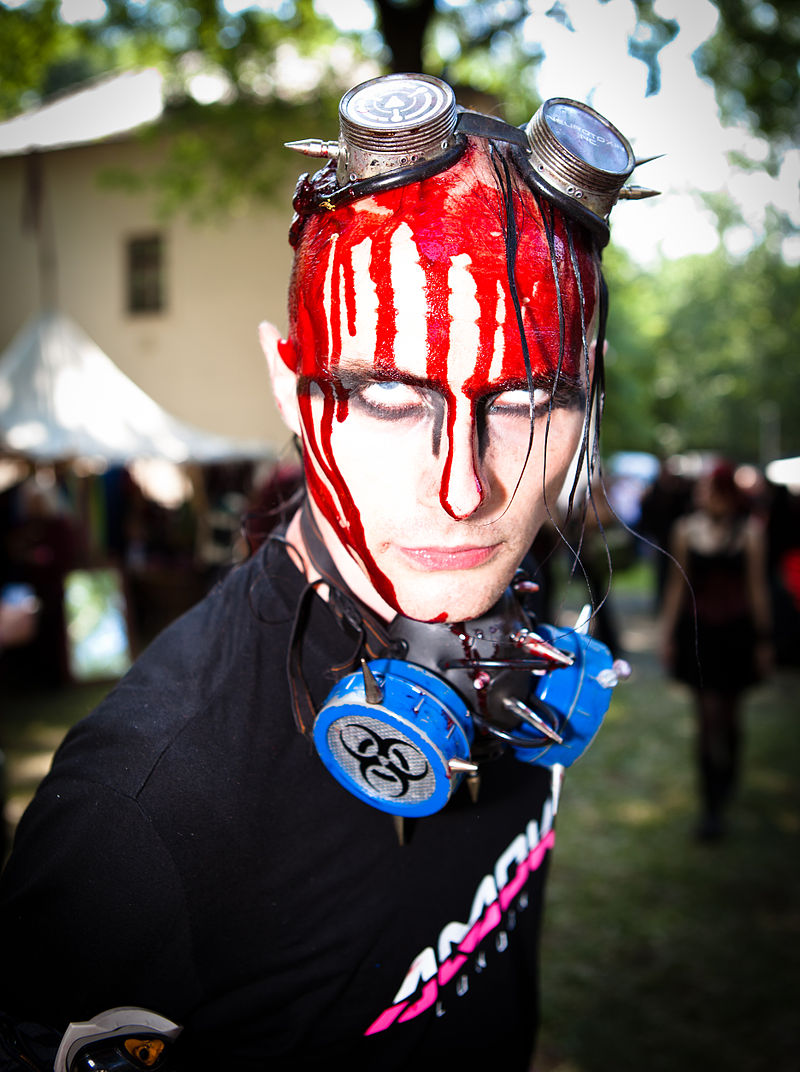
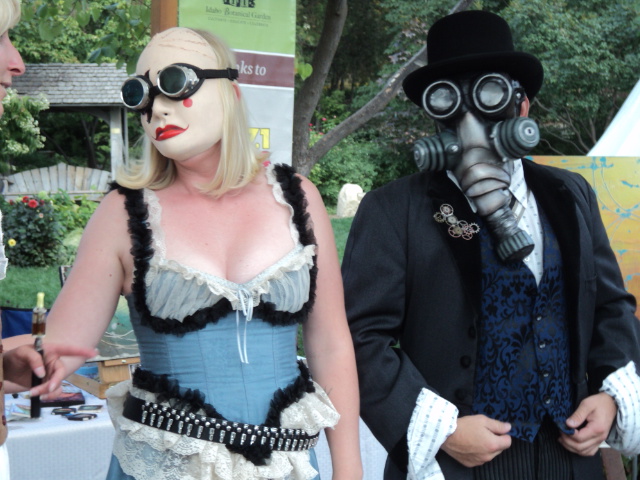
Steampunk Origin of the term
Although many works now considered seminal to the genre were published in the 1960s and 1970s, the term steampunk originated in the late 1980s as a tongue-in-cheek variant of cyberpunk. It was coined by science fiction author K. W. Jeter,who was trying to find a general term for works by Tim Powers (The Anubis Gates, 1983), James Blaylock (Homunculus, 1986), and himself (Morlock Night, 1979, and Infernal Devices, 1987)—all of which took place in a 19th-century (usually Victorian) setting and imitated conventions of such actual Victorian speculative fiction as H. G. Wells' The Time Machine. In a letter to science fiction magazine Locus, printed in the April 1987 issue,
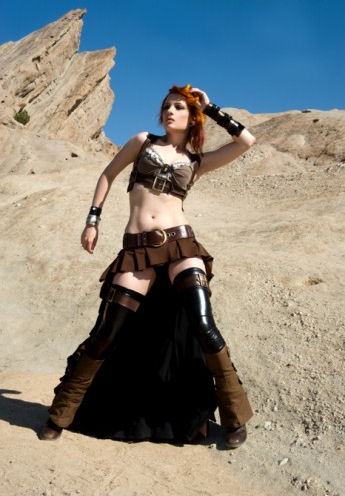
Jeter wrote:
Dear Locus,
Enclosed is a copy of my 1979 novel Morlock Night; I'd appreciate your being so good as to route it to Faren Miller, as it's a prime piece of evidence in the great debate as to who in "the Powers/Blaylock/Jeter fantasy triumvirate" was writing in the "gonzo-historical manner" first. Though of course, I did find her review in the March Locus to be quite flattering.
Personally, I think Victorian fantasies are going to be the next big thing, as long as we can come up with a fitting collective term for Powers, Blaylock and myself. Something based on the appropriate technology of the era; like "steam-punks," perhaps....
— K.W. Jeter
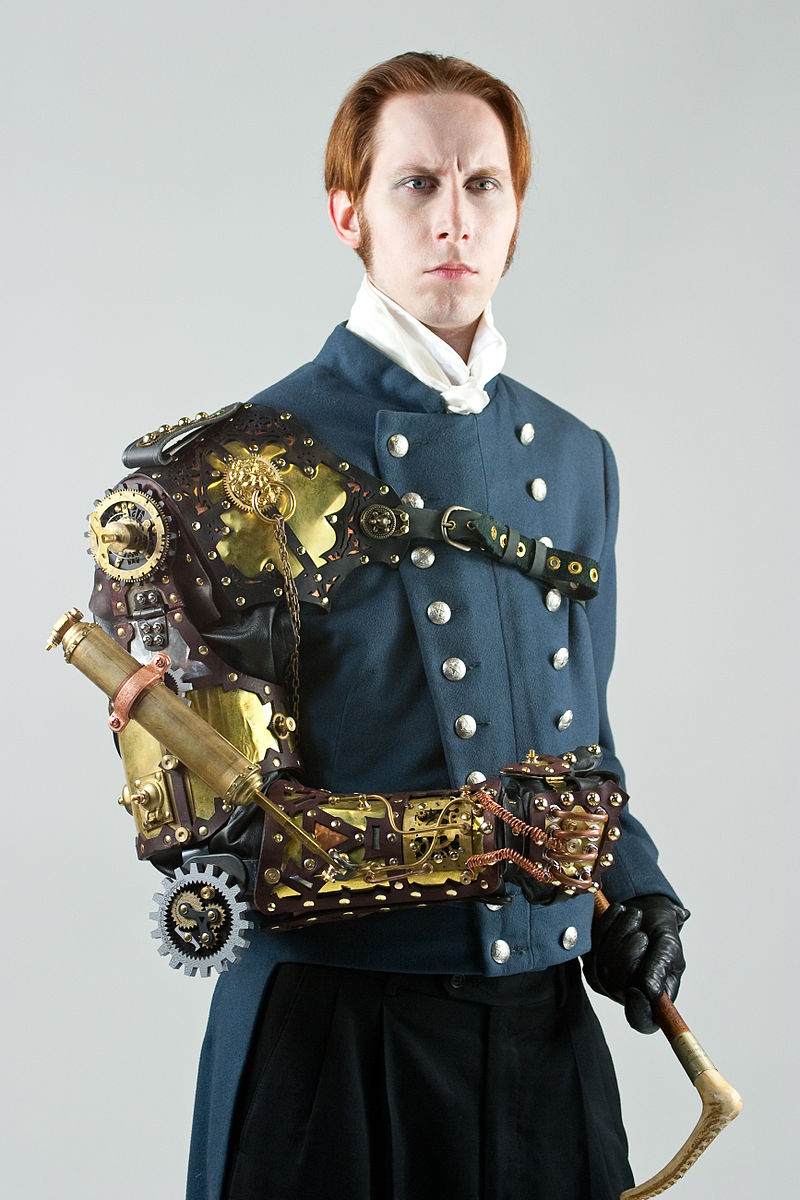
Relationships to retrofuturism, DIY craft and making
Superficially, steampunk may resemble retrofuturism. Indeed, both sensibilities recall "the older but still modern eras in which technological change seemed to anticipate a better world, one remembered as relatively innocent of industrial decline."
One of steampunk’s most significant contributions is the way in which it mixes digital media with traditional handmade art forms. As scholars Rachel Bowser and Brian Croxall put it, "the tinkering and tinker-able technologies within steampunk invite us to roll up our sleeves and get to work re-shaping our contemporary world."[25] In this respect, steampunk bears more in common with DIY craft and making.
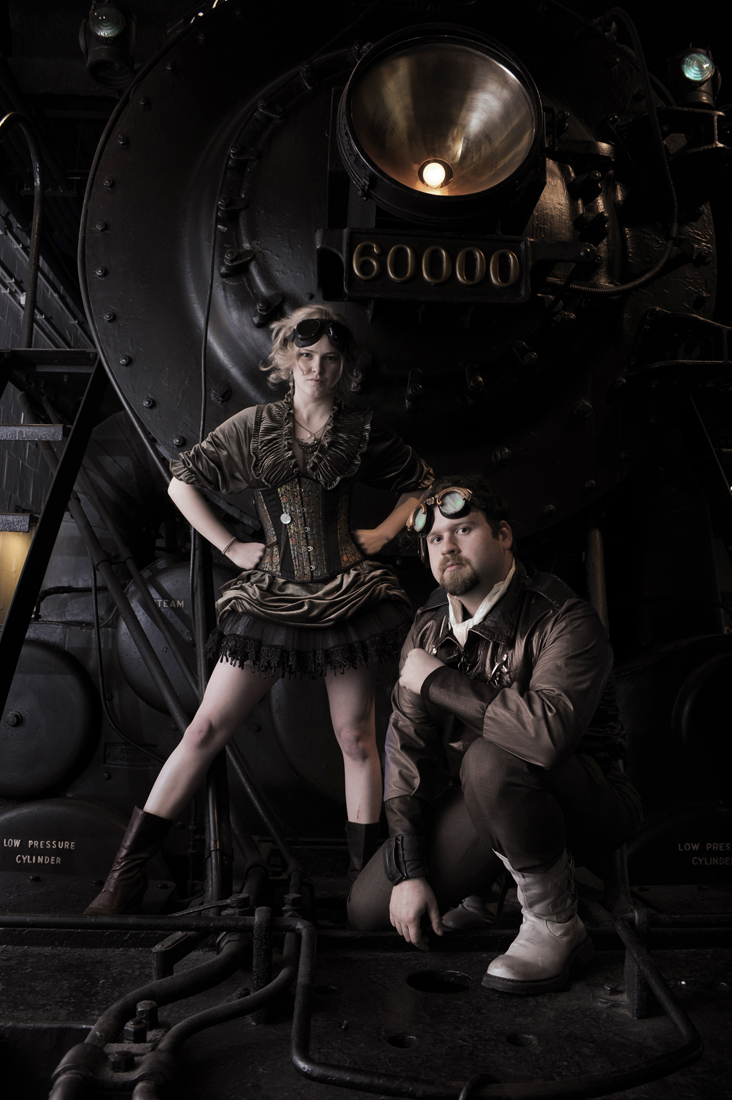
Steampunk Fashion
Main article: Steampunk fashion
Model Ulorin Vex wearing post-apocalyptic steampunk attire designed by KatoSteampunk fashion has no set guidelines but tends to synthesize modern styles with influences from the Victorian era. Such influences may include bustles, corsets, gowns, and petticoats; suits with waistcoats, coats, top hats[56] and bowler hats (themselves originating in 1850 England), tailcoats and spats; or military-inspired garments. Steampunk-influenced outfits are usually accented with several technological and "period" accessories: timepieces, parasols, flying/driving goggles and ray guns. Modern accessories like cell phones or music players can be found in steampunk outfits, after being modified to give them the appearance of Victorian-era objects. Post-apocalyptic elements, such as gas masks, ragged clothing, and tribal motifs, can also be included. Aspects of steampunk fashion have been anticipated by mainstream high fashion, the Lolita and aristocrat styles, neo-Victorianism, and the romantic goth subculture.
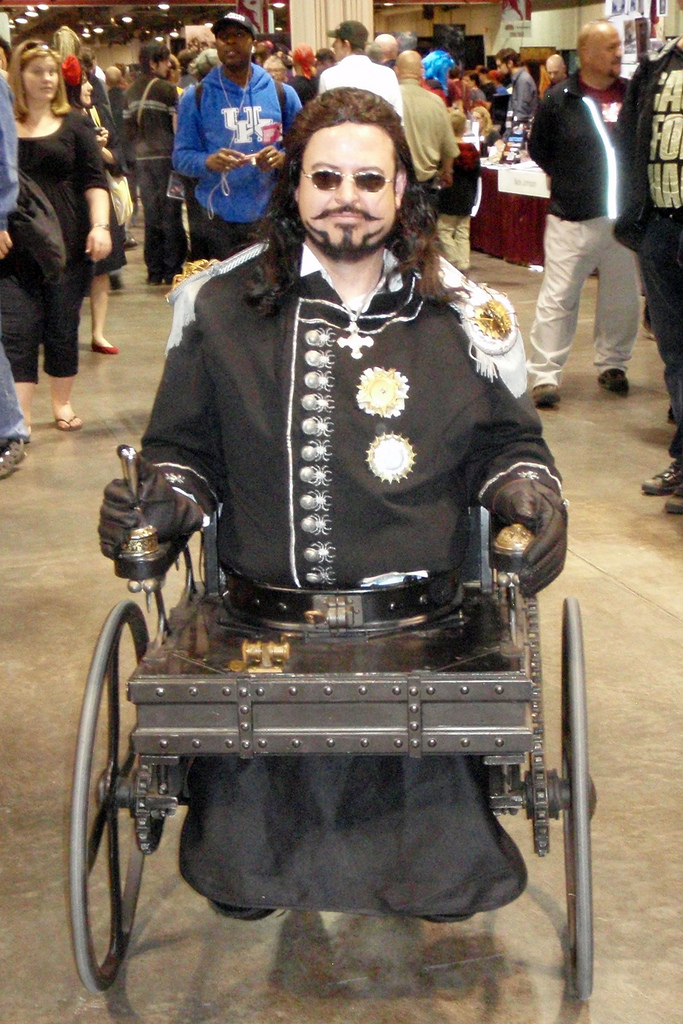
In 2005, Kate Lambert, known as "Kato", founded the first steampunk clothing company, "Steampunk Couture", mixing Victorian and post-apocalyptic influences. In 2013, IBM predicted, based on an analysis of more than a half million public posts on message boards, blogs, social media sites, and news sources, "that 'steampunk,' a subgenre inspired by the clothing, technology and social mores of Victorian society, will be a major trend to bubble up and take hold of the retail industry".Indeed, high fashion lines such as Prada,Dolce & Gabbana, Versace, Chanel, Christian Dior had already been introducing steampunk styles on the fashion runways. And in episode 7 of Lifetime's "Project Runway: Under the Gunn" reality series, contestants were challenged to create avant-garde "steampunk chic" looks.America's Next Top Model tackled Steampunk fashion in a 2012 episode where models competed in a Steampunk themed photo shoot, posing in front of a steam train while holding a live owl.[unreliable source]
Through the introduction above, let more people know what is Steampunk.
